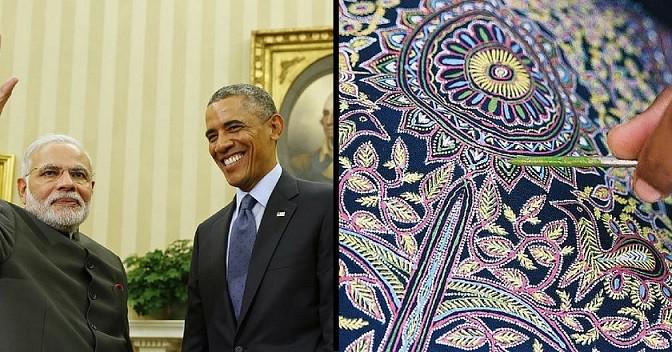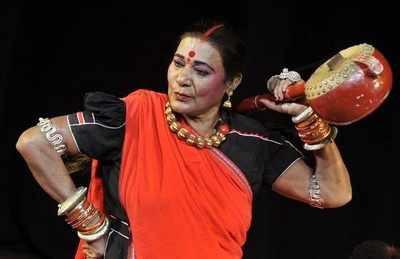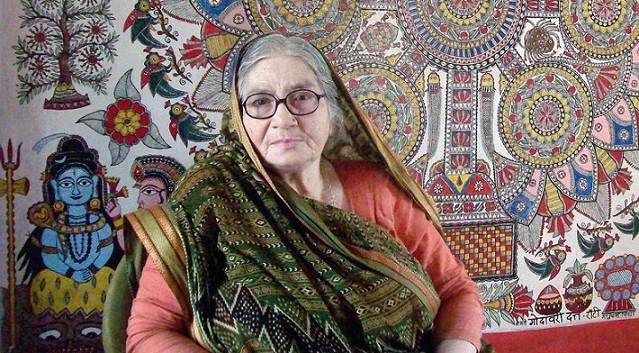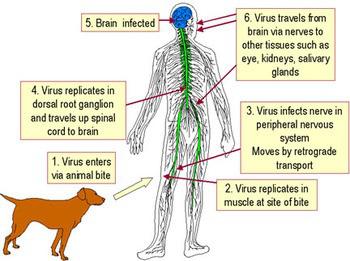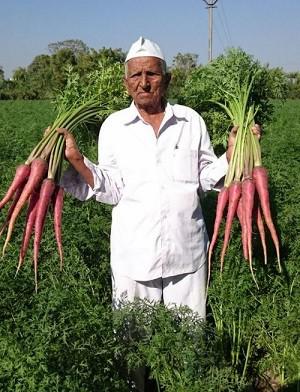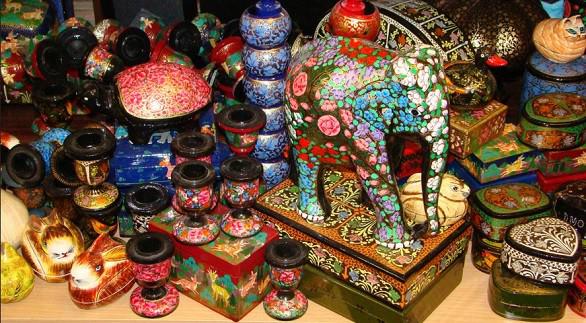Jan. 31, 2019
Mains Article
31 Jan 2019
World Leprosy Day was observed on 27 January 2019 (Sunday) with the theme "ending discrimination, stigma and prejudice". However, around 2 Lakh people living in the 800-odd leprosy colonies scattered across India, the vast majority of whom do not have the disease, continue to face discrimination and neglect in public life.
About:
- Nomenclature: It is also known as Hansen's disease (HD), named after the physician Gerhard Armauer Hansen who identified the bacterium Mycobacterium leprae in 1873 as the causative agent of leprosy.
- Type: It is a neglected tropical disease.
- Cause: It is a chronic disease caused by a bacillus, Mycobacterium leprae.
- Transmission: Although not highly infectious, leprosy is transmitted via droplets, from the nose and mouth, during close and frequent contacts with untreated cases.
- Impact: The disease mainly affects the skin, the peripheral nerves, mucosa of the upper respiratory tract, and also the eyes. If untreated then it can cause permanent damage to these areas.
- Cure: Leprosy is curable with multidrug therapy (MDT).
- World Leprosy Day: it is observed internationally on January 30 or its nearest Sunday to increase the public awareness of the Leprosy. This day was chosen in commemoration of the death of Mahatma Gandhi, who worked towards improving the life of people affected with leprosy.
Indian Scenario:
- The World Health Organisation (WHO) declared the elimination of leprosy as a public-health concern in India in 2005.
- According to WHO norms, leprosy is eliminated if the prevalence of the disease is less than one case per 10,000 populations.
- In 2005, India achieved statistical elimination of leprosy (In 2015-16 the prevalence rate was 0.660). Next step is complete eradication of the disease.
- According to WHO norms, leprosy is eliminated if the prevalence of the disease is less than one case per 10,000 populations.
- National leprosy eradication program: it was launched in 1983 by union health ministry with the following objectives
- Detection of leprosy cases through active surveillance.
- Regular treatment of cases by providing Multi-Drug Therapy (MDT).
- Launching public awareness campaigns to remove social stigma attached to the disease.
- Detection of leprosy cases through active surveillance.
Discrimination against people affected with leprosy:
- People affected with leprosy face social stigma like being called as leper and placing them in separate leper colonies.
- Apart from this, various laws are discriminatory towards them e.g.
- Under Life Insurance Corporation Act, 1956, higher premium rates are charged from persons affected by leprosy.
- Hindu Marriage Act, 1955 sees leprosy as ‘incurable disease’ and a legitimate ground for divorce.
- Under Life Insurance Corporation Act, 1956, higher premium rates are charged from persons affected by leprosy.
- Social stigma associated with leprosy acts as a barrier to self-reporting and early treatment.
- Efforts towards removing discrimination against Leprosy affected persons:
- UN General Assembly adopted a Resolution in 2010 on the ‘Elimination of discrimination against persons affected by leprosy and their family members’. India has signed and ratified it.
- Law Commission of India in its 256th Report titled “Eliminating Discrimination Against Persons Affected by Leprosy”, recommended for removing the discriminatory provisions in various statutes against the persons affected with leprosy.
- UN General Assembly adopted a Resolution in 2010 on the ‘Elimination of discrimination against persons affected by leprosy and their family members’. India has signed and ratified it.
Directions issued by Supreme Court to Centre and states in September 2018 to end discrimination against leprosy-afflicted persons and those living in leprosy colonies:
- Conduct Periodic National Surveys to determine the prevalence rate.
- Formulate a comprehensive community-based rehabilitation scheme which shall cater to all basic needs of the leprosy-afflicted persons and their families.
- Integrate treatment of leprosy into general health care, which will usher in a no-isolation method in general wards and OPD services.
- Give wide publicity to the activities of the National Leprosy Eradication Programme (NLEP).
- Discontinue using “frightening images” of people afflicted with leprosy in the awareness programmes and instead use “positive images of cured persons sharing their experiences of being cured of leprosy”.
- Ensure that drugs for management of leprosy and its complications are available free of cost and that they do not go out of stock in Primary Health Centres (PHCs).
Personal Laws (Amendment) Bill, 2018:
- Recently, in January 2019, Lok Sabha passed the Personal Laws (Amendment) Bill, 2018.
- Objective: To remove Leprosy as a ground for divorce or separation from the spouse.
- Laws to be amended: For this purpose, it seeks to amend the following five Personal Laws which contain provisions related to marriage and divorce –
- The Divorce Act, 1869,
-
- The Dissolution of Muslim Marriage Act, 1939,
- The Special Marriage Act, 1954,
- The Hindu Marriage Act, 1955, and
- The Hindu Adoptions and Maintenance Act, 1956.
- The Dissolution of Muslim Marriage Act, 1939,
- The proposed law, thus implements the recommendations of UN General Assembly adopted a Resolution in 2010 and Law Commission of India.
Mains Article
31 Jan 2019
Padma Shri : In the field of Art-Painting.
Abdul Gafur Khatri, a resident of Nirona village in Kutch district, Gujarat is a Rogan Painting artist. This art form became popular when Prime Minister Narendra Modi gifted a ‘Tree of Life’ motif prepared by Khatri to ex-US president Barack Obama on his 2014 US visit.
Rogan Painting:
- Painting material: ‘Rogan’ is a Persian word meaning ‘oil-based’, and refers to the thick residue formed when castor oil is heated and cast into cold water. After it is mixed with natural colours, the residue is drawn out into a fine ‘thread’ and then applied to a cloth.
- Performers: Abdul Gafur Khatri and his family members are the only one who practices Rogan art form, thus it is also known as Nirona Rogan Art.
- Design: Various designs have been made by them, however they have extensively explored the ‘Tree of Life’ motifs in many of their works.
- Application: Rogan motifs are generally made on ghaagra-choli, bed sheets and tablecloths. But now they are also used as decorative items like wall hangings and framed cloth pieces.
- Depending on the detailing involved, rogan painting can take from four days to a year for completion.
Mains Article
31 Jan 2019
Padma Vibhushan: In the field of Art-Vocals-Folk
Teejan Bai, belonging to the Pardhi Scheduled Tribe of Chhattisgarh, is a famous exponent of Kapalik style of 'Pandavani'.
Known for performing Pandavani in her unique folk singing and powerful voice, she has been awarded with Sangeet Natak Akademi Award, Padma Shri, Padma Bhushan and most recently Padma Vibhushan. in 2018 she was awarded the Fukuoka Prize by the Japanese city of Fukuoka.
Pandavani:
- Pandavani, literally means stories of Pandavas, is a traditional performing art which involves narrating/enacting tales from the epic Mahabharat.
- It involves the use of musical instruments such as with ektara or a tambura in one hand (which also symbolises mace of Bhima - the second Pandava).
- It is popular in the state of Chhattisgarh (and in the neighbouring states of MP, Odisha and Andhra Pradesh).
Styles:
- Vedamati style: Here the narration is strictly based on Sabbal Singh Chauhan's Mahabharat written in the Doha-Chaupal Metre. Its popular exponent is Jhaduram Devangan.
- Kapalik style: Here the performer can narrate the Mahabharat in his/her own style. its popular exponent is Teejan Bai.
Mains Article
31 Jan 2019
Padma Shri : In the field of Art-Painting
Godavari Dutta, in her 80s, is well-known in Madhubani district of Bihar for her Mithila paintings. She has played a key role in the establishment of a Mithila museum in Japan dedicated to the paintings. In 2006, she was conferred the title of “Shilp Guru” by President of India.
About Madhubani Paintings:
- Nomenclature: It is named after Madhubani district in Bihar. It is also known as Mithila painting due to its origins in the Mithila region of India and Nepal.
- Background: initial references about the paintings can be found in the Hindu epic.
- Recognition: Madhubani painting has been given the geographical Indication (GI) status.
Painting style:
- It is a traditional Indian folk part depicting various subjects such as Mythological characters, social events like Marriages and Festivals, Sun and Moon etc.
- Geometrical figures are key elements.
- Natural dyes are used in its creation. These colours are often bright.
- It is made on canvas, cloth or cow dung washed hand paper.
Jan. 30, 2019
Mains Article
30 Jan 2019
Padma Shri : In the field of Social Work and environment.
Saalumarada Thimmukku is a passionate environmentalist and a lover of nature known for selfless social service despite poverty for planting over 1.75 lakh trees.
At the age of 106 years she is considered a role model to the nation in environmental conservation by planting lakhs of trees.
Government of India in CBSE text books and Karnataka State Government text books have included her work as an inspiration to children at a young age on nature conservation.
Mains Article
30 Jan 2019
Padma Shri : In the field of Agriculture.
Rajkumar Devi, widely known as the Kisan Chachi or Cycle Chachi, belongs to the Anandpur village in Bihar's Muzaffarpur district. Using her acquired expertise in assessing soil quality, she cycles through villages giving tips about Kitchen farming and helping farmers get profitable harvests.
She has also mobilized women to form Self-Help Groups (SHGs) which has been a stepping stone for women to take-up main stream farming and agri-business in a male dominated occupation. The women also receive farm loans and Government support through schemes such as Deendayal Antyodaya Yojana-National Urban Livelihoods Mission (DAY-NULM).
DAY-NULM is a Government scheme that provides gainful employment to the unemployed or under- employed through self- employment ventures and community empowerment.
Mains Article
30 Jan 2019
Padma Shri : In the field of Medicine ( Cost effective anti- Rabies treatment).
Dr. Omesh Kumar Bharti has developed Rabies Immunoglobin (RIG), a cost effective anti-Rabies serum to be injected around the wound of the victim to treat Dog, Monkeys and Bat bites or sctratches. This innovative method has been recognised by the WHO.
Rabies:
- Rabies is an infectious viral disease that affects nervous system. It is almost always fatal following the onset of clinical symptoms.
- In up to 99% of cases, domestic dogs are responsible for rabies virus transmission to humans. Yet, rabies can affect both domestic and wild animals. It is spread to people through bites or scratches, usually via saliva.
- Rabies is present on all continents, except Antarctica, with over 95% of human deaths occurring in the Asia and Africa regions. India records over 20,000 deaths every year.
Mains Article
30 Jan 2019
During Pariksha Par Charcha 2.0, Prime Minister Narendra Modi was told by a concerned mother that her son was addicted to online games such as PUBG, and was neglecting his studies.
PUBG:
- PlayerUnknown’s Battlegrounds — or PUBG — is an online multiplayer battle royale game in which 100 players jump on to a battlefield of their choice and try to collect supplies and ammunition that would help them survive.
- The game, owned by China’s Tencent Holdings, is available on gaming consoles like Xbox and on personal computers, besides mobile. The game is hugely popular and has 200 million daily active users worldwide.
What is online gaming addiction?
- WHO has defined Gaming disorder as a pattern of gaming behavior (“digital-gaming” or “video-gaming”) characterized by increasing priority given to gaming over other daily activities, and continuation of gaming despite the occurrence of negative consequences.
Cause for addiction:
- The widespread use of smartphones, affordable data packages and particularly free-to-play online games have played a key role in boosting the popularity of online video games.
- Video game designers, who are trying to make a profit, are always looking for ways to get more people playing their games. They accomplish this by making a game just challenging enough to keep you coming back for more but not so hard that the player eventually gives up.
- Some of it may be other mental health issues like Video games acting as the only affordable release at the end of a long workday or for depression. Other mental health problems, like anxiety, could play a role too.
- It also could be genetic. Some people just experience fewer temptations, or have more willpower, than others.
- A person’s environment could play a role too. Perhaps someone will be forced to move to a place where she doesn’t have friends, family, or previous hobbies, so games will quickly become the only thing that gives him/her joy.
Effect:
- Studies suggest that gaming disorder affects only a small proportion of people who engage in digital- or video-gaming activities.
- However, for people indulging in gaming addiction can result in significant impairment in personal, family, social, educational or occupational areas.
- Gaming disorder can lead to disturbed sleep patterns, diet problems and deficiency in physical activities.
- These games can also be very time-consuming, leaving addicted gamers with less time to focus on their education or career.
Solution:
- People who partake in gaming should be alert to the amount of time they spend on gaming activities, particularly when it is to the exclusion of other daily activities.
- Steps taken @ Global Level: To bring attention of health professionals to its risks.
- WHO included Gaming disorder in the 11th revision of the International Classification of Diseases (ICD-11) in June 2018 and
- American Psychiatric Association (APA) has added “internet gaming disorder” in the Diagnostic and Statistical Manual of Mental Disorders (DSM-5).
- WHO included Gaming disorder in the 11th revision of the International Classification of Diseases (ICD-11) in June 2018 and
- Steps taken @ Government Level:
- In 2011, the South Korean government implemented the Cinderella Law, which prohibits children under the age of 16 from playing online video games between the hours of 12 am to 6 am. However, the law was later amended.
- Gujarat state government has initiated steps to educate young students on the bad effects of playing PUBG and sought the Centre’s permission to ban it altogether.
- In 2011, the South Korean government implemented the Cinderella Law, which prohibits children under the age of 16 from playing online video games between the hours of 12 am to 6 am. However, the law was later amended.
Jan. 29, 2019
Mains Article
29 Jan 2019
The U.S has declared that the American and Taliban officials have agreed in principle to Afghan peace framework.
Background on talks with Taliban
- The decision to talk to the Taliban was taken nine years ago during President Obama’s tenure.
- The Doha office (in Qatar) of the Taliban was established for negotiations but there weren’t any concluding talks.
- By the middle of 2018, the U.S started pushing for direct talks with the Taliban urgently (in line with President Trump's agenda to withdraw troops from Afghanistan).
- There have been four rounds of talks during 2018.
- After the latest round of talks with the Taliban delegation in Doha, the U.S Special Envoy to Kabul has declared that U.S and Taliban have agreed on a “framework” for a peace agreement.
Details of the draft framework:
- Taliban has agreed on committing to not allow terrorists like Al- Qaida and Islamic state to use Afghan territory to carry out attacks on the U.S and its allies.
- U.S has agreed to pull out troops from Afghanistan on condition of direct talks between Taliban and Afghan Government as well as a ceasefire. However, the Taliban delegation has asked for some time to decide on it.
Significance of the framework:
- A tangible step forward:Realizing a draft peace deal after nine years of efforts is the biggest tangible step toward ending the two-decade war.
- Preventing the use of Afghanistan for terrorism: A long pending demand by U.S.A is the Taliban agreeing to prevent use of Afghan territory by terrorist groups is a major step towards stabilizing peace.
- Primacy of the US:With the declaration of near agreement, the U.S has moved ahead of Russia in its effort to find a resolution in Afghanistan involving other regional players like Iran and China.
Concerns remain:
- Direct talks: The U.S. offered agreeing to withdraw troops from Afghanistan only on the condition that Taliban enters direct talks with Afghanistan government and agrees to a permanent ceasefire, which could create trouble in finalizing the deal.
- Final deal still some way away:This is just a framework and technicalities have to be worked out, and until the deal is finally agreed upon, draft matters little.
- Presidential election in Afghanistan: The presidential elections are due in July and the actual impact of the deal on elections is unclear.
Impact of this Peace talk on India
- India has over the past 17 years helped and supported the Government from the behind without getting too involved with the ground reality.
- Afghanistan has been one of the biggest receivers of aid from India. India had worked in the areas of humanitarian assistance, infrastructure development, civilian reconstruction efforts and community development projects which have generated enough goodwill for India among the Afghans. It is for this reason India’s foreign policy towards Afghanistan is called ‘Goodwill Diplomacy ‘.
- Most of the developments that India has rendered have been mostly in and around Kabul, thereby concentrating only on the requirements of the Government.
- India has worked in Afghanistan with two primary objectives:
- Helping Afghanistan to be self reliant and countering Pakistan’s influence in Afghanistan. With this approach, India never wanted the Taliban to have a part in the Government.
- Reduce Pakistan’s ability to run terror groups in Afghanistan against India with the influence of Islam.
- Helping Afghanistan to be self reliant and countering Pakistan’s influence in Afghanistan. With this approach, India never wanted the Taliban to have a part in the Government.
- India preferred to have its relations only with Kabul and did not adopt a holistic development approach for the entire country.
- This is likely to have an impact with India’s intended interest towards Afghanistan, when the Taliban gets to have a say in the Government.
- India has to be prepared to accept that it’s investments- economically, politically and socially are likely to yield limited outcome.
- With the Taliban gaining legitimacy by controlling over 60 % of the landmass of Afghanistan, India will have no better approach than to engage with the Taliban.
Jan. 28, 2019
Mains Article
28 Jan 2019
The Supreme Court has upheld the Insolvency & Bankruptcy Code (IBCs) constitutional validity in its ‘entirety’ and rejected petitions challenging the bankruptcy laws.
Salient features of the IBC, 2016:
- The 2016 Code applies to companies and individuals.
- The Code creates time-bound processes for insolvency resolution of companies and individuals. These processes will be completed within 180 days.
- A resolution plan specifies the details of how the debt of a defaulting debtor can be restructured.
- The Code creates various institutions to facilitate resolution of insolvency. These are as follows:
- Insolvency Professionals will administer the resolution process, manage the assets of the debtor, and provide information for creditors to assist them in decision making.
- The insolvency professionals will be registered with insolvency professional agencies.
- Information utilities (IUs) will be established to collect, collate and disseminate financial information to facilitate insolvency resolution.
- Adjudicating authorities: The proceedings of the resolution process will be adjudicated by the National Companies Law Tribunal (NCLT), for companies; and Debt Recovery Tribunal (DRT), for individuals.
- Insolvency and Bankruptcy Board: It will be set up to regulate functioning of IPs, IPAs and IUs. The Board will consist of representatives of Reserve Bank of India, and the Ministries of Finance, Corporate Affairs and Law.
- Insolvency Professionals will administer the resolution process, manage the assets of the debtor, and provide information for creditors to assist them in decision making.
Recent Supreme Court Verdict: Key observations made
- It is a code for reorganization and insolvency resolution of corporate debtors. Quick reorganization and insolvency resolution maximise value of the assets of corporate debtors and promotes entrepreneurship.
- In the working of the code, the flow of resources to the commercial sector in India has increased exponentially as a result of financial debts being repaid.
- As a legal framework, IBC will help to develop the credit markets. The economy's rightful position has been regained and the defaulters' paradise is lost by the IBC.
- It upheld the classification between the financial creditor and operational creditor in IBC as it is neither discriminatory nor arbitrary and non-violative of Article 14 of the Constitution.
- The Code consolidates disparate bankruptcy and insolvency laws of the past under one umbrella. The judgment termed these past laws as “trials which led to repeated errors”.
- The court upheld certain relaxations given to micro, small and medium enterprises (MSME) under Section 29A of the Code. This provision disqualifies certain kinds of persons from submitting a resolution plan.
Comment on judgement:
- Upholding of the provisions that bar the defaulting promoters from bidding is both ethical and proper. It will help in pushing a key structural reform.
- The decision is a setback to defaulting promoters hoping for a chance to remain in control of their firms.
- The endorsement of the law and its provisions by the Supreme Court would come as a boost to the government which pushed for a modern bankruptcy law in the first half of its term.
Challenges and way ahead:
- Of about 1,500 cases admitted until end-December 2018, only 79 ended in an approval of the resolution plans and liquidation in a little over 300 cases. Thus in future, more cases of corporate debtors need to be resolved.
- The major worry is the failure in many cases to stick to the prescribed timeline of 180 to 270 days to firm up a resolution plan with elaborate hearings at NCLT benches. It is important that these timelines are adhered to.
- Over time, the NCLT may be better tuned to these kind of summary proceedings with capacity building and training of professionals. It will help that the Court has directed the government to set up circuit benches within six months.
- The challenge still lies in how quickly some of the dozen large accounts referred to the insolvency court by the RBI, featuring huge outstanding claims, are resolved.
Mains Article
28 Jan 2019
Padma Shri: in the field of Social Work-Microfinance
Chinna Pillai, a farmer by profession is from a small village called Pilluseri in Madurai, Tamil Nadu. She is known for developing and pioneering the Kalanjiyam-Self Help Group (SHG) for women by lending micro credit to empower women living in poverty. She is responsible for creation of over 2500 SHGs to benefit women.
In 2000, Prime Minister AB Vajpayee, while presenting Stree Shakti Puraskar award to her, touched her feet as a mark of reverence for her social service.
Mains Article
28 Jan 2019
Padma Bhushan: in the field of Sports-Mountaineering
Bachendri Pal, an Indian mountaineer, is the first Indian women to climb the Mount Everest, the highest mountain peak in the world. She achieved this feat in 1984 and was awarded the Padma Shri subsequently. She is also a social worker and carried out relief work during the Uttarakhand floods. She is an inspiration to many women to go beyond household work and overcome gender bias.
Other key facts:
- Premlata Agarwal is an Indian mountaineer to climb the ‘seven summits’ highest mountain in each of the seven continents.
- Edmund Hillary (New Zealand) and Tenzing Norgay (Nepali-Indian) were the first the scale the Mount Everest in 1953.
- The Indian Army included a team of Avtar Singh Cheema, H.P.S Ahluwalia, Nawang Gombu, Sonam Wangyal , Sonam Gaytso, Harish Singh Rawat and Chandra Prakash Vohra , were the first Indians to climb the Mt. Everest in 1965.
Mains Article
28 Jan 2019
Padma Shri: in the field of Art-Literature
Noted English writer Gita Mehta has declined the Padma Shri award, after being named as one of the 94 awardees citing political reasons.
About her:
- Books authored: A notes English writer, she has authored several books in English including, Karma Cola, Raj, A River Sutra, Snakes and Ladders: Glimpses of Modern India, and Eternal Ganesha: From Birth to Rebirth.
- Family:
- She is the daughter of Biju Patnaik, an Indian independence activist and former Chief Minister of Odisha. Her younger brother Naveen Patnaik has been the Chief Minister of Odisha since 2000.
- She is married to Mr Ajay Singh ‘Sunny’ Mehta, who is the editor-in-chief of A. Knopf Publishing group, famous for publishing biographies of Noble prize, Pulitzer prize, Booker prize winners and Political and religious world leaders.
- She is the daughter of Biju Patnaik, an Indian independence activist and former Chief Minister of Odisha. Her younger brother Naveen Patnaik has been the Chief Minister of Odisha since 2000.
- Awards: She was selected as one of the recipients of India's fourth highest civilian award the Padma Shri in 2019, for her contribution in the field of literature.
Jan. 27, 2019
Mains Article
27 Jan 2019
Padma Shri: in the field of Others-Agriculture
Vallabhai.V. Marvaniya is an organic farmer from Juagadh district, Gujarat. He has been awarded the Padma Shri as a Grassroot innovator of Madhuvan Gajar variety. In 2017, he was also conferred with the 9th National Grassroots Innovation Award by the President of India.
Madhuvan Gajar:
- Madhuvan Gajar is a carrot variety developed by him from a local variety through selection method.
- It is highly nutritious in Beta-carotene and iron content. It is also known for high yield during the Kharif season for farmers in Gujarat, Rajasthan and Maharashtra.
Mains Article
27 Jan 2019
Padma Shri: in the field of Art-Dance (Bharatnatyam)
Nartaki Natraj is an eminent Bharatanatyam dance performer of the Nayika Bhava and a transgender rights activist based in Tamil Nadu. She is the first transgender to receive the Padma award. She is considered a role model to have overcome hardships due to her gender.
Nayika Bhava:
- According to the shastras, Nayika Bhava depicts the 8 different mental statuses of women portraying expression in different situations, feeling, sentiments and reactions.
- Do you know? The Ashta-Nayika is a central theme in Pahari embroidery used to decorate the Chamba Rumal, produced in Chamba, Himachal Pradesh.
Mains Article
27 Jan 2019
Padma Shri: in the field of Art-Craft (Kashmir Papier Mache)
Fayaz Ahmad Jan is an artisan keeping alive the dying art form of Paper Mache from Kashmir.
About Kashmir Papier Mache:
- Papier Mache or Paper Mache is derived from French meaning 'chewed Paper'.
- Papier Mache is a composite material consisting of paper pulp reinforced with some adhesive which hardens upon drying and then is painted upon. The products created are generally in the form of vases, bowls boxes, trays and many other small objects.
- Procedure: Making a Paper Mache product involves two steps namely Sakhtsazi and Naqashi. Sakhtsazi involves fashioning the base product from the pulp of paper into the desired form while Naqashi is the painting process done over it.
- Government initiatives for promoting it: The craft is protected under the Geographic Indication Act 1999.
- Background: According to Historians, the Shia community of Kashmir is keeping alive the papier mache art in the Valley since the 14th Mughal kings, were fond of this art and were its patrons.

